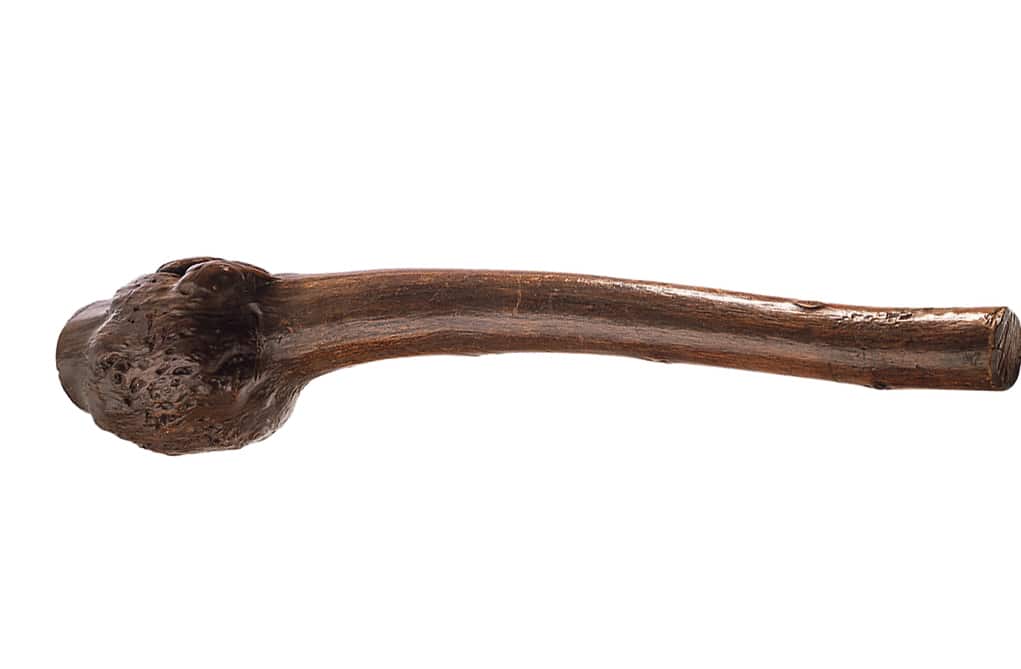The Israel invasion of Gaza has caused a huge reaction worldwide. Yet despite the tens of thousands of civilian deaths, it has been allowed to run for five months unabated. Over the next two issues, I want to explore the history and politics of this conflict, to bring a deeper understanding of all the factors that have brought us to the precipice, of what many are calling genocide.
Who started this conflict and what has been the response so far?
This latest conflict was sparked by the Hamas attack on Israeli villages on October 7, 2023, which resulted in the slaughter of 1,200 Israelis and the kidnapping of 253 of their people. The Israeli Defensive Forces have since responded using air attacks, artillery shelling and a ground invasion of Gaza resulting in 27,000 deaths, 70 per cent of whom have been civilians. But the conflict has its roots from as far back as 1917 when a British minister, James Balfour, announced that, ‘His majesty’s Government, view with favour, the establishment in Palestine, the national home for the Jewish people.’ Interestingly, the statement also declared, ‘That nothing shall be done which may prejudice the civil and religious rights of the non-Jewish communities in Palestine’. Whether the latter clause was a genuine pursuit or merely window dressing, it has failed to materialise.
In the Bible, the Jewish homeland was situated within that geographical area in ancient Israel. Surely it makes sense that the Jewish people want to live there?
If only history was so simple, and time stood still. The bible is a tricky document and defies a single categorisation. It’s a religious codex, a historical document, a propaganda tool to spread religion (Judaism – Old Testament/Christianity – New Testament), a template for living, a work of parables. But what it’s not, is a legal document or land registry. While it is true that there were strong pockets of Jewish settlements in 1917, there were also Christians, Greek Orthodox and Bedouin nomadic tribes. But at that time, 94 per cent of those lands were occupied by Arab people. The Ottoman Empire held together all these disparate peoples until it was dissolved with its defeat in World War One. However, the ancient pull to this land runs deep for the Jewish people and Orthodox Jews and, many mainstream Israelis believe in the Old Testament doctrine that it’s their land. In the book of Genesis, God tells Abraham, ‘I will assign this land to your offspring.’ Incredulously, references like these have actually formed Israeli settler policy and incursion into the west Bank over decades. However, the sands of civilisation and nationhood had shifted out of all recognition over the last 2,000 years since there were significant Jewish settlements.
Has the place Zion got anything to do with Zionism and what exactly does that term mean anyway?
Yes it does. Zionism is a political colonial movement that was established in 1897, by Chaim Weizmann, who was born in Russia, and later became president of Israel. It called for a movement for re-establishment of a Jewish nation in what is now Israel. The word ‘re-establishment’ is worth noting. Zion, according to the Bible, was a fortified city in Jerusalem, inhabited by a tribe of people called Jebusites. King David dislodged them in a great battle and Jerusalem then became an economic, cultural and religious centre for the Jews. We must remember, long before Hitler’s ‘Final Solution’ to rid the world of Jews, they had been targeted for centuries. The Christian crusaders, on the way to the Holy Land to battle with the forces of Islam, would routinely rout and massacre Jews settlements on route. They were a ghettoised people, as students of the Merchant of Venice will remember. When the Spanish expelled the Islamic Moors from Spain in 1492, they expelled the Jews too. The Russians Tsars in the early 20th century, inflicted years of pograms on the Jews. This list goes on. A search for a homeland, a safe space, was the driving force for this movement, against the backdrop of antisemitic forces that were rife in Europe for centuries. Yet Zionism only works through colonisation, which is why it has been an ongoing project by Israel for 75 years. What makes Zionism particularly potent is that unlike other colonial models such as British Kenya, or French Vietnam, the Israelis don’t rely on the indigenous people for their means of production. Jewish immigrants, as well as Palestine expulsions, have ensured complete control over the lands they have occupied, and this is at the heart of Zionism. The Gaza conflict is a continuum of a Zionist project that pushed the indigenous people from the land.
Has antisemitism any correlation with being anti-Israel?
Absolutely not. Anti-Semitic is a type of religious sectarianism. To be anti-Semitic is to be prejudicial and discriminatory, against people who practice Judaism. For many it also means a hatred of Jews. The Israeli state, while being a nation where Jews live, is in its own right, a political and military entity, as well as a physical place. To be against the state of Israel’s military and geopolitics clearly has no correlation with antisemitism. The politicians of Israel however try to make a connection between the two, to sling mud on opponents who question their policies. That may not stick here, but in nations with significant Jewish diasporas such as the USA, that accusation can damage careers, not to matter how erroneous it is. The latest example of this from an Irish context was when one of the Israeli basketball team players Dor Saar, stated, ‘it’s known that they [Irish people] are quite antisemitic, and it’s no secret.’ This comment was made by her, when it emerged there was a strong campaign building, to support a boycott of the fixture. Clearly voicing concern about the escalation about the war is not anti-Semitic, but taken by Rotberg, Saar and co, to be just that. It seemed a very strange comment from John Feehan, chief executive of Basketball Ireland that sport and politics shouldn’t mix when, in the week coming up to the game, the women’s Israeli basketball team posed for photographs on the playing court with a member of the Israeli Defense Forces, including a picture of guns on the courts. It was a disingenuous comment from Feehan to suggest sport and politics don’t mix given how Russia’s current expulsion from sporting events is running parallel to this situation. Unfortunately, the team had to play, as it did not receive any support from the governing body, FIBA, to cancel the game. Thus far, the Israeli team has not been sanctioned for the photos. I do wonder what would have been the response if say, an Iranian or Syrian team did the same?
So how come Israel has nationhood, yet Palestine amounts to two (occupied) territories?
You’ve probably all heard the two-state solution being discussed on the airwaves and in the press. This is nothing new. So why not just allow the two peoples to have their own state? On November 29, 1947 the United Nations adopted Resolution 181 that divided Palestine and Israel into two separate territories and in 1948, Israel, backed by the USA declared itself a state. Palestine did not get the same treatment and hence officially is not a sovereign state. The Oslo agreement in 1993, merely gave the PLO (a forerunner before Hamas) some limited autonomy to run the Palestinian territories but superseded by Israeli law and control. To come to this agreement, the PLO, representing the Palestinians, finally accepted the UN resolution that recognised Israel’s right to nationhood. In turn, Israel had to accept the Palestinian territories. It was the beginning of what would develop into what has now been categorised by human rights groups (but denied by Israel and the USA) as an apartheid state. Speaking in 2022, Michael Ben-Yair, a former attorney general of Israel, said that “it is with great sadness … I must also conclude that my country has sunk to such political and moral depths that it is now an apartheid regime’. This is particularly true of the West Bank where the Oslo accord has been flagrantly ignored and blatantly broken by decades of Israeli incursion into Palestinian territories in the West Bank, which has deliberately weakened the idea of two states, rendering it an impossible solution. This is not the work of some renegade Israel citizens. It has been supported by continuous Israeli governments that have presided over this land grab and financially backed by the USA. In 1947, Jerusalem was officially deemed an ‘international city’, but now is under Israeli control and recognised under the Trump regime as the capital of Israel, despite it being in contravention to UN policy. (And still is today in the USA)
So is the Israel territory, recognised by the UN in 1947, the same country today?
Not at all. It’s unrecognisable. Since 1948 Israel has expanded its territory, at times occupied parts of Egypt, Lebanon, Jordan and Syria (it still occupies the Syrian Golan Heights) and of course much of the Palestinian territories, enabling them to reach beyond its official state borders. For from being defensive manoeuvres, the state of Israel has in engaged in war for over 75 years, to expand its territories, thus increasing its land territory and occupying 78 per cent of the region formally known as Palestine. The important thing to note here, is that they didn’t merely occupy the land, but forced 720,000 Palestinians from a population of 1.3 million from their homes – which Palestinians today call the Nakba. In Cromwellian fashion, the Israeli militia actually massacred men, women and children in some villages, promoting a massive exodus of Palestinians for fear of similar treatment elsewhere. They were never allowed back to their homes, which were appropriated by the ‘settlers’ over time.
Next month I will look at the long decades of wars and massacres that have been visited upon the Palestinians and examine if the accusations of war crimes or genocide against the state of Israel are genuine.
Just a quick shout out for Ellen McWilliams a local West Cork woman who has published a beautifully written memoir/history, called ‘Resting Places – On Wounds, War and the Irish Revolution’, which is now on sale. McWilliams now lives and lectures in Bristol and brings a unique perspective to the era.



